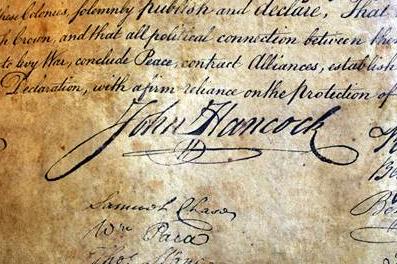Remember that moment sometime in childhood when you realized that your signature was special? After seeing the bold swirls of John Hancock’s famous mark on the Declaration of Independence in 6th grade, I practiced writing my own name in dozens of ways to find the most impressive style for a life full of fame and autograph seekers.
Except for signing credit card receipts, an occasional contract, and of course the tax return, there aren’t many opportunities to leave a memorable physical signature these days. Nonetheless, each time you hit the email “send” button you have a golden opportunity to leave a positive reminder of who you are. Here are some pointers for a professional email signature:
People need your information. I’m always surprised by the number of emails I receive with no contact information – sometimes not even a last name. For professional email correspondence, a signature should include your full name and contact phone numbers at the very least. Your official title and department name is helpful. Also include a URL pointer to your company’s website, unless you work for a large well-known organization. If you don’t already know how, learn how to create a signature that automatically appears on each outgoing message – email programs provide the ability to easily create signature files.
Don’t throw in the kitchen sink. While some people provide no information, the other extreme overdoes the signature feature (I commonly see this from self-employed professionals like myself). Avoid making the signature so long or so LARGE that it distracts from your message. Some information is unnecessary. I just removed my office street address from my signature when I realized that anyone could find it easily from my website (Duh!). Using the signature block to push your latest product or service or to overly tout yourself can be off-putting. So is an excessive use of tag lines and quotations.
Don’t be too cute. Emoticons, smileys, moving animation, a picture of your dog – these personal touches scream unprofessionalism online. So do wildly colorful and fanciful fonts. A little color is great and small logo can be a great branding element, but watch out for going overboard and remember that some graphics may translate as attachments on certain email programs.
Your signature is a constant reminder of your personal brand. It may make sense to create several signature files that vary based on the issue at hand and the tone you wish to convey. As with every other element in an email, your signature reflects you – keep it professional and thoughtfully consider its impact on your recipients.
Learn anything here? If so, you probably need to review the rest of your email skills. I recommend Net M@nners website — it’s a great resource for improving your online image.

